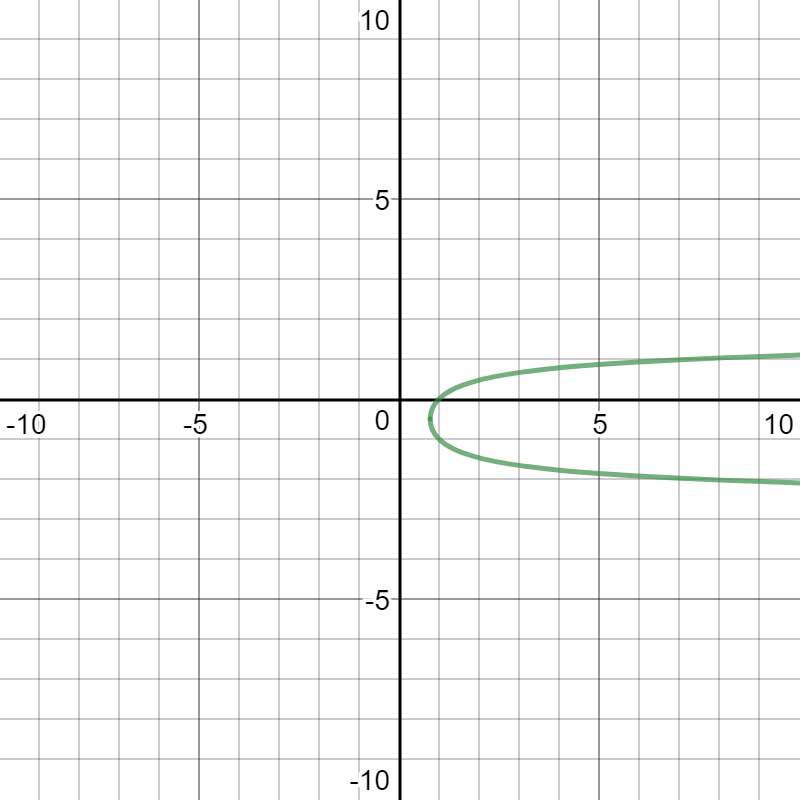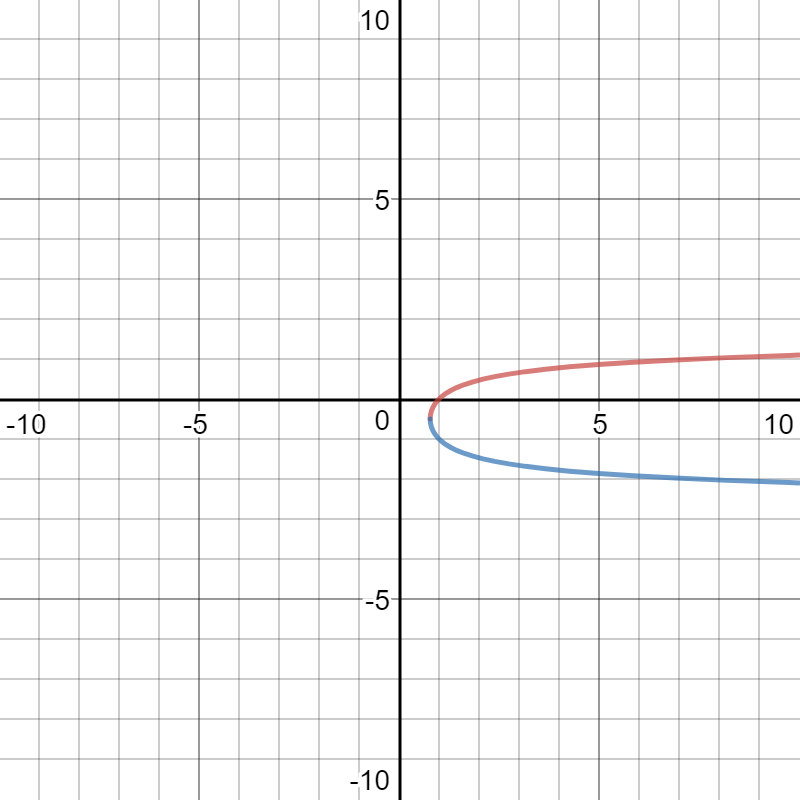Find #y′′# for the curve #ln(x) + y = ln(x^2) − y^2# at #y = 0#?
1 Answer
Explanation:
Given:
Add
Use the fact that subtraction of logarithms is the as division within the argument:
Write is standard quadratic form:
Here is a graph of equation [1]:

We can use the quadratic formula to obtain two equations of y in terms of x
and
Here are the graphs of equations [1a] and [1b]:

Please observe that equation [1a] contains the point of interest,
Evaluate when
